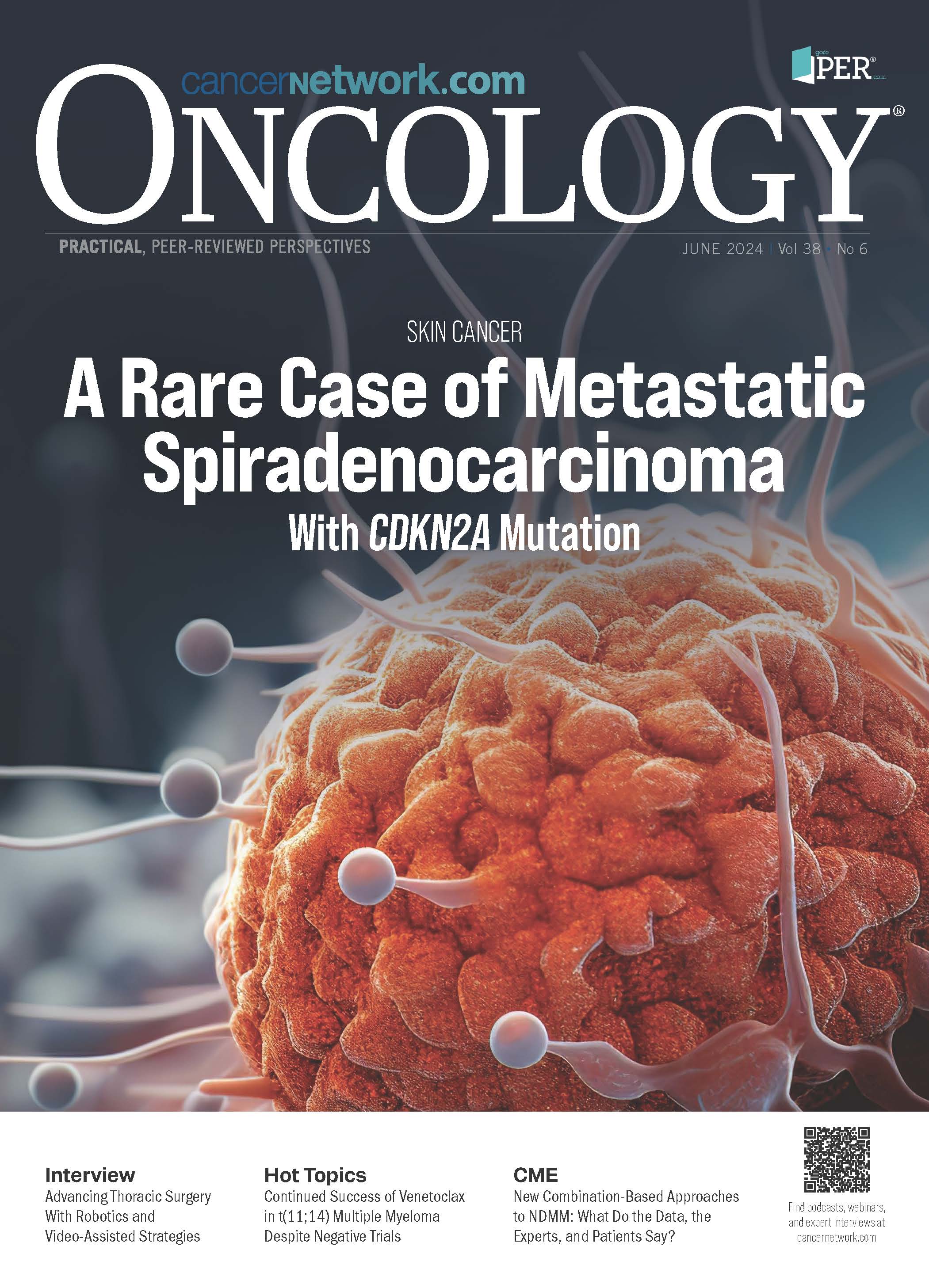Current Applications and Future Use of Artificial Intelligence in Oncology
Neil M. Iyengar, MD, focuses on the use of artificial intelligence in the oncology space.
Nearly all areas in our lives and the lives of our patients are impacted by the growing use of artificial intelligence (AI), whether we are explicitly aware of it or not. In medicine, AI-based tools have already been clinically implemented across a variety of specialties, such as radiology, pathology, and dermatology. Significant growth in capabilities and an increase in the associated applications have propelled AI use from predominantly diagnosis and screening to prognostication, therapeutic monitoring, and even treatment selection. Leveraging the increasing availability of “big data” sets, AI use in the research setting has expanded to include novel applications for radiographic and histologic assessments, drug discovery and development, novel biomarker and genomic prediction algorithms, and more. Such applications have further expanded the possibility of developing tumor-agnostic therapeutics targeted to novel genomic and/or microenvironment signatures. Finally, the use of AI at the systems level has the potential to improve health care delivery across a growing number of diverse communities affected by cancer.
Digitization of histology slides has also expanded the use of AI in pathology. The Cancer Genome Atlas is one of the largest biorepositories; it contains more than 10,000 digital pathology images across more than 20 types of cancers with associated clinical and genomic data. Several studies have utilized it and other repositories to develop diagnostic, prognostic, and predictive AI models that identify subtle histologic features and patterns. This approach has led to the development of novel digital pathology and genomic biomarkers that could be leveraged for diagnosis and treatment monitoring purposes once validated. For example, with the increasing use of immunotherapy and recently approved antibody-drug conjugates (eg, trastuzumab deruxtecan; Enhertu), AI technology could assist treatment selection by accurately quantifying PD-1 expression in the tumor microenvironment or tumor cell expression of HER2 at low or even ultralow levels in digital pathology images. Finally, the use of AI technology for analyzing genomic biomarkers (apart from histology) has been an exciting area of development for treatment selection and may be pivotal for advancing novel screening technologies that rely on genomic patterns detected in cell-free DNA—ie, the coveted “cancer screening blood test.”
Perhaps one of the most exciting but challenging arenas for the use of AI in oncology is treatment selection and monitoring. Several platforms are currently in use for early drug discovery, which involves the processing of clinical, genomic, and proteomic data to identify therapeutic targets and associated molecule selection for further development. In the clinical setting, AI tools can assist with predicting treatment resistance based on patient and tumor features as well as ex vivo testing on biopsy samples. Incorporation of novel biomarker datasets beyond bulk tumor sequencing, such as single-cell sequencing to differentiate tumor and microenvironment components, may reduce the need for tissue samples in future AI-based treatment prediction tools. Individualized drug dosing is yet another exciting potential use of AI in oncology, and current tools under development utilize large datasets that include host factors (eg, body mass index, comorbidities, functional status), patient-reported outcomes, and adverse effect profiles in addition to traditional clinicopathologic features.
Despite AI’s promise, some key challenges need to be addressed for AI technologies to continue expanding in clinical implementation. First, datasets—including digitized images—must be standardized in terms of variables, quality, processing and storage procedures, and other parameters to maximize the potential of deep learning. Next, many AI-derived diagnostic and prediction models require validation before larger-scale clinical implementation is possible. To include broader, more diverse data sets in AI modeling, transparency and trust regarding privacy and data use must be well established. The legal and ethical implications of AI use in medicine are evolving and should continue to be centrally addressed as AI applications grow. Related to privacy and trust, it is imperative that underrepresented and minority populations are included in learning datasets or that there are dedicated datasets that can be included in machine learning to generate equity in the application of AI. Finally, the framework in which AI is implemented should augment rather than overshadow oncologists and patient-centered decision-making. The potential for AI in oncology is highly promising across multiple domains, yet it is human ingenuity that is required to maximize this potential.

How Supportive Care Methods Can Improve Oncology Outcomes
Experts discussed supportive care and why it should be integrated into standard oncology care.